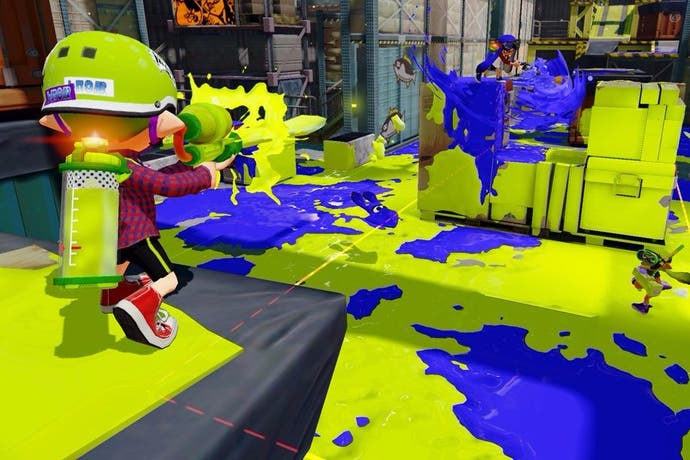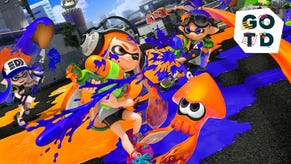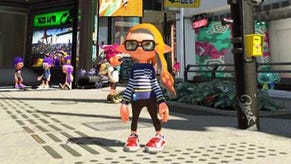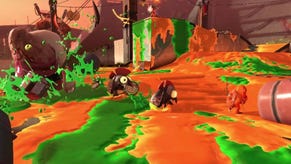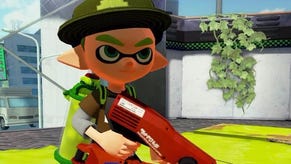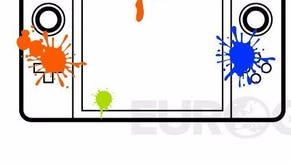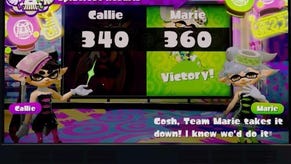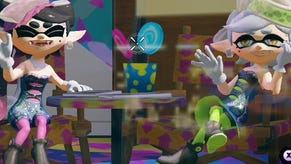Nintendo might be making the most exciting online shooter in years
An afternoon with Splatoon's single-player and multiplayer reveals a real delight.
Lateral thinking with seasoned technology. It's a philosophy established by Game Boy creator Gunpei Yokoi, and one that you can attribute much of Nintendo's success to. It turns out it's a philosophy that's just as potent when it comes to software. Splatoon takes the somewhat tired premise of an online shooter and, with a little creativity and large, literal splashes of colour, makes for a shooter that's bursting with potential.
Splatoon doesn't look like a shooter, of course, and it does everything it can to fool you into thinking it isn't one. There's violence, but it's firmly of the cartoon variety - playing competitively in Splatoon is only ever as menacing as taking part in a food fight that's gotten slightly out of hand. There's that colour, too, liberally sloshed around each map as teams lay claim to territories - and it's by staking territory that you win or lose matches, rather than through the number of scalps you've claimed.
Look beyond that, though, and there are cute little spins on shooter staples: there are toy town takes on grenades, sniper rifles and shotguns, there are unlockables, perks and load-outs tied into your progression and, although Splatoon's coy about it, there are even super-weapons that act like kill-streak rewards, allowing players who are excelling on the battlefield - or simply those able to stay alive long enough - to briefly unlock an exquisite new toy.
Turf War, the mode with which Splatoon debuted and has been shown off ever since, is enlivened by some of the recently revealed additions. The weapons in Splatoon are a joy: the shotgun analogue spurts out thick, deadly globs of paint over a short range that cover a wide area of the map, while also proving effective at downing any player who gets in its path. The 5.2 Gallon gun, meanwhile, spits out explosives that detonate after a short pause with devastating effect.
The roller's easily the best, though, a B&Q staple that's been weaponised with hilarious results. It's ideal for covering a large area when you're trying to claim the map in Turf War, and it's also pretty handy as a melee instrument too, steamrollering the opposition and flattening them into colourful paste. Each weapon comes with a sub slot and a special slot , amounting to what's effectively a load out - the sub slot is taken up with grenades or, in certain cases, a temporary shield that can be flung out to protect you and your allies, while the specials, briefly available after you've filled a small charge meter, range from ammo-limited rocket launchers to the ability to summon whirling tornadoes of paint with a touch of the Game Pad.
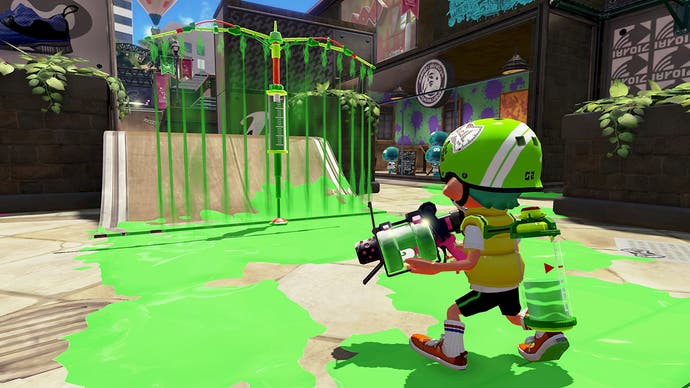
It all makes for frenetic action in the 4v4 multiplayer, which is made all the more frantic in Splatzones, the new Ranked Battle mode that's being shown for the first time. The idea is still to claim space by painting it, but this time it's a small square at the centre of the map that's being contested. Get it painted all in your team's colour and you claim it, setting a countdown timer ticking - hold on to it long enough and it's game, set and match. Concentrating the action down makes for a different kind of anarchy, one that's fast-paced and more focussed.
Minute-by-minute, then, Splatoon is a joy - it's quite possibly the most refreshing thing to happen to online shooters since Titanfall wowed us with its elegant, acrobatic traversal. Titanfall, while by no means a disaster, fell apart for many after only a short time of play, so it'll be interesting to see how Splatoon retains its players in the long run. There's a ranking system that seems to work like Mario Kart 8's, rewarding you for continued success, while a gear system grants you different abilities depending on what boots, hat or t-shirt you've got equipped.

Splatoon is more than an online shooter, even if that's where its core seems very much to be. There's a sizeable single-player element, too, which we were able to sample for the first time recently. The single-player introduces puzzle elements into Splatoon's make-up, its deliciously sloppy painting mechanic applied to traversing the environment as you spray surfaces with ink and leap into your newly-created mess. There are new toys, too - jets of ink that send you skywards, platforms attached to fans that can be blown across the skies and troops of enemies that can be taken down with your playful arsenal. It's got the potential to be something special in its own right, if the new ideas are folded in as frequently as they were during our brief time playing through a handful of levels.
Both single and multiplayer are accessible from a hub area, Inkopolis, that sprawls out before the player. Like much else in Splatoon, it's absolutely gorgeous, a slice of a metropolis that looks like a pre-school Shibuya, and that promises to be full of little secrets and easter eggs. There's something about Splatoon's aesthetic, in fact, that seems more typical of late-90s Sega than contemporary Nintendo, its excess of colour mixed in with a slight punk edge bringing to mind Jet Set Radio.
Its characterful approach to shooting reminds me of another less celebrated Sega game of that time, too - AM2's Outtrigger, a competitive arena game that took the action of shooters like Quake and filtered them through Sega's arcade sensibilities. Splatoon feels like the contemporary shooter as filtered through Nintendo's own sensibilities, benefitting from the company's exquisite attention to detail and lateral approach to design. It all makes for what's quite possibly the most exciting shooter there's been in an age.
This article was based on a press trip to Frankfurt. Nintendo covered travel expenses.
